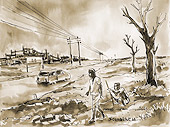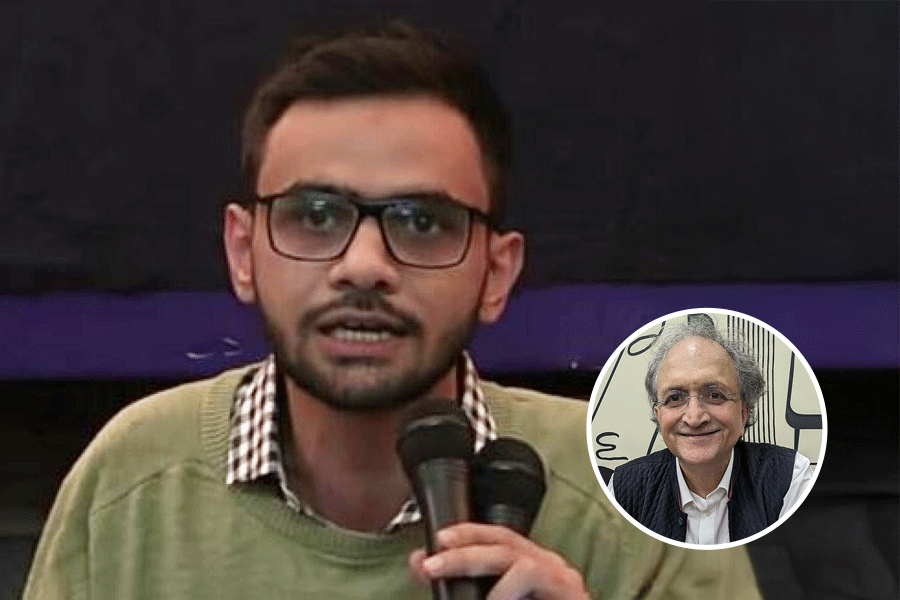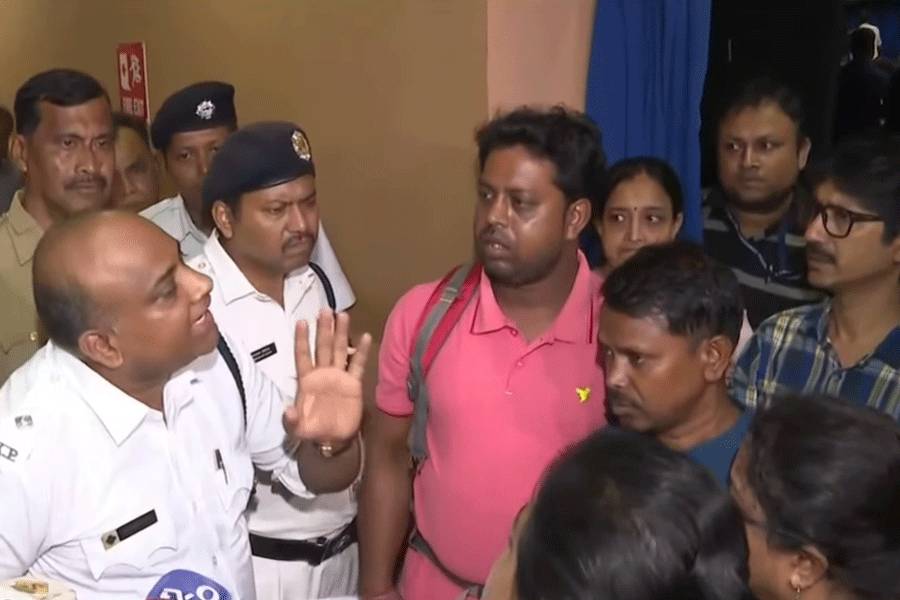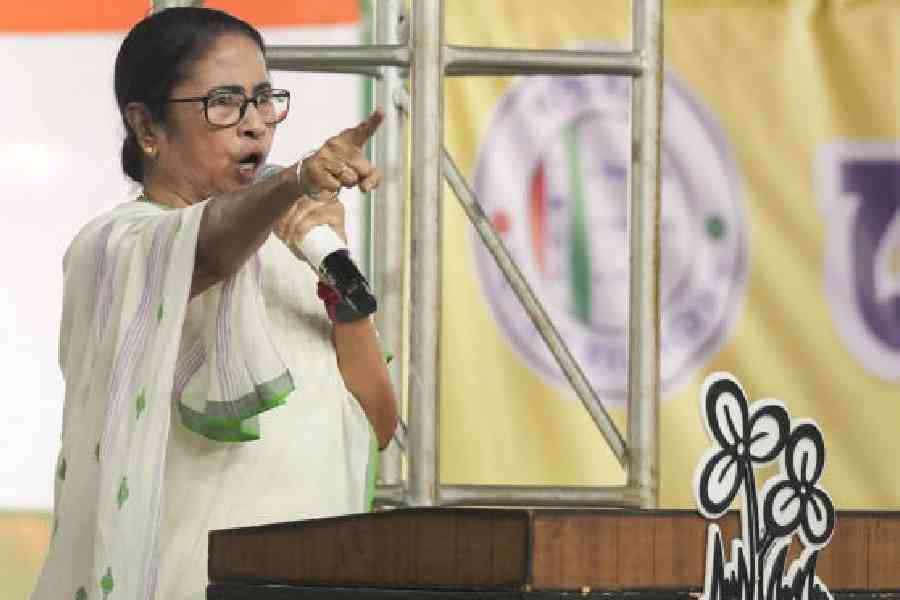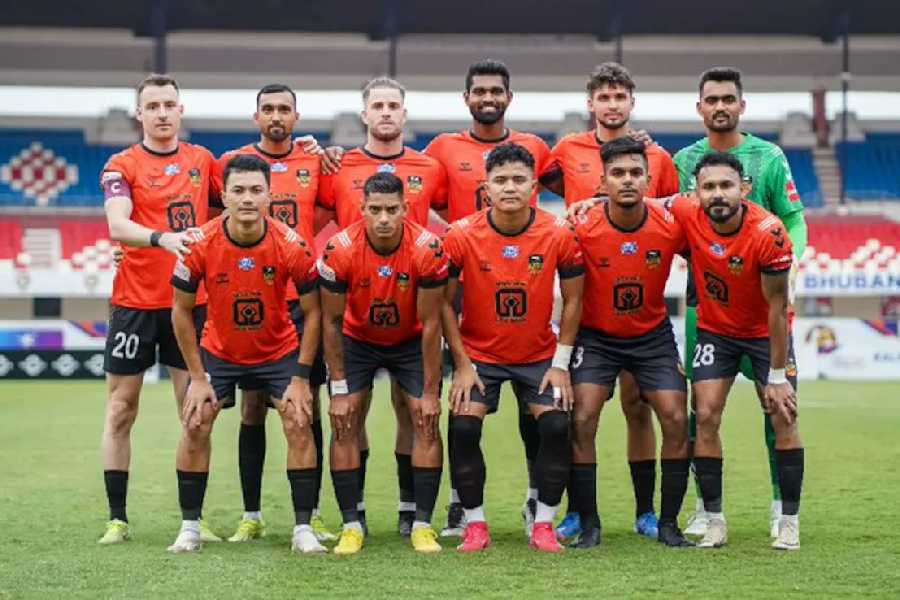 |
I had passed the last signs of life four days ago and the lone 15-hutment hamlet of Kargia was several hours behind me. I was tiring of this game of solitude. I was tired of talking to myself, tired of scouring the dunes for signs of habitation, tired of shouting out and tired of praying as my voice rang through the valley in search of a reply, returning in a hollow, lonely echo.
I was only halfway through my journey to Phuktar, a 2,500-year-old monastery in the Zanskar region of Ladakh, one of the most thinly populated valleys of the world. There are no roads in this part of the world above 15,000 feet. Only prayer flags, stones with the words Om mane padme hum inscribed on them and the odd chocolate wrapper cast away by some inconsiderate traveller to guide people on the way.
I was staring at one such crushed coke can when I heard the almost inaudible mumble. I squinted my eyes to keep out the glare of the sun just in time to see him emerge from the lengthening early-afternoon shadows, his red robe and bright yellow cap standing out against the stark, brown surrounding.
Blessings come in many forms in this land stripped of oxygen, water and vegetation. Like the exotic smell of a clutch of colourful wildflowers that offers respite from the monotony of golden sand and wind-creased pinnacles. Like the stinging sun that cracks the skin, but melts glaciers, makes streams flow and all life flourish. Like Thuksey, the monk who appeared seemingly from nowhere, as if to give me company.
We crossed Testha, a hamlet with five houses and an equal number of terraced fields, and began a steep downhill descent to meet the exuberant Tsarap river that gushed through the valley floor, crossed a bridge and entered a gorge draped in shadows. Thuksey was still chanting and it seemed as if the tumultuous Tsarap was chanting with him. Then as we turned another bend, the gorge opened up. ?Phuktar,? Thuksey said.
In the distance the three-tier monastery rose like a fortress, little white rooms, the monks? quarters, tenuously glued to a wall of rock that surrounded the temples sheltered in a yawning cave. It seemed impossible to think that someone had built such an imposing structure with only tools fashioned from rocks. But faith, I learnt, can move, and, in this instance, help carve, mountains.
When the Buddha first came here in search of a sacred cliff following a vision, said Thuksey, sweeping his hand across the vast sandy panorama, ?all of this was a lake ruled by the serpent king Nag. As the holy one surveyed the lake, Nag emerged from its depths to ask him what he wanted. The Buddha asked the serpent king to allow him to meditate in the cave. Nag obliged.? Thuksey then went on to describe how Nag drank up all the water to expose the cliff in which the Buddha then meditated and one day, opening his eyes, asked a disciple to build a monastery there.
Going by the Internet, where Phuktar is spelt Phugtal or Phuktal, three brothers found the cave and meditated in it. In the 15th century, they showed Sherap Zangpo, who left Tibet to establish the Gelupa sect of Buddhism here, the way to the cave, in which he meditated and then built the monastery.
My escort?s version sounded more interesting, and even more believable after he showed me a well with ?healing water?, a vestige of the legendary lake. Once done with his story, Thuskey handed me over to Dorjee, a higher-ranking lama. The bellow of a horn sounded on the second tier, the call for evening prayers. I followed Dorjee through a narrow passage, up a flight of stairs and past a well-stocked cafeteria, proof that the quest for solitude that drove monks to this cave was being increasingly breached.
The prayer hall was throbbing in an almost trance-inducing hum, the result of the collective recitation of around 60 lamas. Dorjee motioned me to a corner of the room. Every now and then, a lama would break off to sip from a bowl of Tibetan tea, a concoction of water, salt and butter, their most important source of dietary fat. I looked around the room. In the other end was an altar with a serene golden idol of the Buddha. The head monk was seated nearest to it. I could make out the hierarchy that existed in the seating order and was enlightened on why I was the nearest to the exit.
Dorjee was kind enough to give me a guide the next day. The little monk scurried to show me the cavernous kitchen, where a breakfast of thukpa, a soup made of barley, was being prepared. The chef handed me a bowlful and even the liberty of eating it on the move. On the third tier was the main prayer hall, which is used only during ceremonies. Mammoth figures of Mahakala and Avalokiteshwara brooded in the dark, their faces wrapped in cloth, which, my escort told me, is taken off only during ceremonies. The most exquisite room, however, was the library, which housed ancient scrolls. The walls were adorned with intricate murals depicting the life of the Buddha.
During my lonely four-day trek I found what it was that led people to come so far just to find a cave and live in it forever. I realised that in a land where even necessities are a luxury, faith is all that people have to fall back on. I set out on my way to Padum three days later, promising to return. Ladakh had cast its spell on me.

